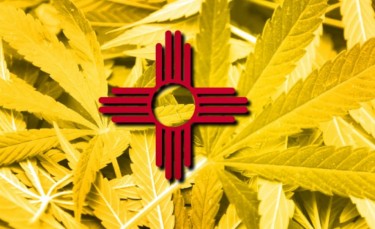Will New Mexico Run Out of Cannabis When Legal Sales Begin?

When New Mexico started legalizing cannabis, the marijuana community in the state was ecstatic because it marked a new dawn for them. When it finally attained legalized status, the excitement was through the roof, but today it seems like something is threatening that joyful feeling in the state.
The trouble with availability
New Mexico faces a looming crisis and may have trouble with marijuana availability. Experts in the state are saying that recreational marijuana products may run out in the first week when sales begin.
The Superintendent of the Regional and Licensing Department5, Linda Trujillo, discussed with the Economic Development and Policy Committee on July 26. She said that it is likely the state will face ‘Krispy Kreme Syndrome”.
The Krispy Kreme Syndrome is likened to when the Krispy Kreme franchise opened its door and faced an unprecedented rush leading to the unavailability of products. In referring to cannabis sales, Trujillo said that the state anticipates not having the products that will suffice for the demand when the program launches next year.
She maintains that they are projecting that products will run out in the first two weeks, and this information is derived from the feedback they got from other states within the first week of them launching their legalized cannabis products.
In truth, some states that legalized cannabis way before New Mexico also experienced a shortage of products within the first two weeks. So New Mexico’s anticipation of a deficit is not paranoid. It is a safe prediction given the precedent set by other states.
Trujillo also maintains that the state must ensure that it has about 500,000 plants to meet the anticipated demand. It wouldn’t be easy to grow that amount, as Trujillo notes that the stipulated number of plants will account for at least 18% of the growth failure rate.
New Mexico is ready for the rush.
The state’s new recreational laws were officially effected on June 29. but it has a deadline to start issuing marijuana licenses as early as September 1. But the Regulation and Licensing Department has still not released details about the planned retailer rule, and individuals haven’t been chosen to operate the Cannabis Regulatory Advisory Committee.
Trujillo had expected that by the start of June, everything would be in place, so it is disappointing that it is taking too long to effect. The New Mexico legislative arm has approved this cannabis legislation at a unique session at the start of April.
They set a harsh deadline for all aspects of the cannabis industry, from production to retail and even testing facilities, at the legislative session. The new regulatory movement includes Cannabis Control Division (CCD) which alters plant-based laws. The CCD agreed to increase the number of plants that a grower can cultivate from 4,500 to 8,000. They also included an additional 500 years for four years, leading to a total of 10,000 plants.
It is expected that New Mexico will get up to $50 million in marijuana revenue in its first year of the law in effect. The rising payment also means it will positively impact the job sector with an expected 11,000 jobs. Although there wouldn’t be a shortage of interest in marijuana, Trujillo’s main worry is how the state can make it easy for locals to gain access to cannabis.
The focus here is on locals with poor finances because access to capital is not always available. Trujillo’s fear hinges on the fact that people interested in entering the cannabis industry will take extreme measures to get in. Some of the steps include taking out the family savings, mortgages, or even their retirement funds.
The concerns shared by New Mexico’s cannabis business owners
Matt Munoz is a partner in the Carver Family Farm Venture, and he is looking to become a marijuana microbusiness owner. From Yahoo Finance, he maintains that the state should assist residents that want to enter the marijuana industry.
He also asserts that assistance should come in obtaining licenses: that the cost of getting requests shouldn’t be too high. He also said that the cost of operating the cannabis business is also high.
Cannabis availability is limited in New Mexico. For instance, in Albuquerque, Munoz insists that the vacancy rate is up to 2% which means it is too complex and expensive for residents to operate a marijuana business. He has also voiced his concerns about the rising black market for cannabis in Oklahoma, where the cannabis program has been active for three years.
Munoz also wants the state of New Mexico to ensure that all its residents are the priority when it is time to apply for cannabis licenses. He wants this to happen even before other established, and out-of-state companies apply for the permits and approvals. But Trujillo maintains that the bill that was signed into law doesn’t give room for that.
Munoz argues that if New Mexico’s residents interested in the cannabis business do not get an early shot, I can contribute to the growing black market. The residents may justify their action to seek cannabis through other means when the government deserted them.
The Cannabis Control Department will organize another public hearing. Subsequent meetings will be held even after the sales of recreational marijuana commences.
Bottom Line
The legalization of cannabis in any state is not the end of the state’s challenges with marijuana. Legalization means all persons above the state’s legal age can gain access to the marijuana market, which also means an increase in demand.
An increase in demand is a good thing, right? It is supposed to be a good thing, but if the state is unable to match such needs, it becomes a problem. So to answer the question, the title poses: New Mexico may run out of cannabis within its first week after legalization.
But if the state takes a proactive approach to the situation by ensuring that growers are planting more plants. When demand meets supply, the market can thrive: suppliers will be happy, citizens happy, and hat to ensure a stable cannabis market.







